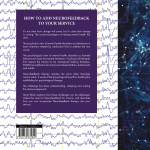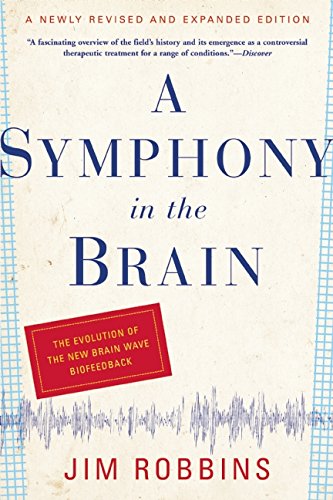Where can I read more about Neurofeedback ?

 BrainTrainUK founder Stuart Black’s book Neurofeedback for Trauma – Past Present & Future is now available on audiobook here. Designed to offer existing therapists, schools, mental health services and local authorities a route to adding neurofeedback to their services, it describes our journey, makes the case for neurofeedback for trauma, and goes into considerable detail on the health economics of unremediated trauma and the case for neurofeedback funding from the public sector. It is heavily referenced so also a useful resource for students and academics.
BrainTrainUK founder Stuart Black’s book Neurofeedback for Trauma – Past Present & Future is now available on audiobook here. Designed to offer existing therapists, schools, mental health services and local authorities a route to adding neurofeedback to their services, it describes our journey, makes the case for neurofeedback for trauma, and goes into considerable detail on the health economics of unremediated trauma and the case for neurofeedback funding from the public sector. It is heavily referenced so also a useful resource for students and academics.
There are still a few copies left of the print 1st Edition Neurofeedback for Trauma – Past, Present and Future – How to add neurofeedback to your service.
 When potential new clients approach us, we often find ourselves referring to David Eagleman’s book Livewired.. He explains how the brain’s plasticity (neuroplasticity) is fundamental to human development, and how the brain’s ability to make sense to information extends to changing itself to understand information it has received.
When potential new clients approach us, we often find ourselves referring to David Eagleman’s book Livewired.. He explains how the brain’s plasticity (neuroplasticity) is fundamental to human development, and how the brain’s ability to make sense to information extends to changing itself to understand information it has received.
Many clients find it a lot easier to understand how giving the brain feedback on itself (neurofeedback) can change the brain once they understand this. An example we like to use is that your auditory cortex, the part of your brain that interprets the sounds picked up by your ears, was not designed to be an auditory cortex. It became an auditory cortex by learning to make sense of the electrical signals picked up by your ears. Our brain’s plasticity is the reason why it is possible ‘translate’ sensory information, for example from sound to touch, to supplement senses not working properly. It is also the reason why we dream – see article here.
Jim Robbins’ A Symphony in the Brain: The Evolution of the New Brain Wave Biofeedback by Jim Robbins (Aug 5 2008) is a well written and engaging story about Neurofeedback, the people, the technology and speculates as to the future. We recommend you buy the 2008 2nd Edition, as a lot has happened in the 14 years since the book first came out in 2000. As 2008 is several years ago this will not give the fully up to date story but is a ‘must read’ for anyone interested in the field. Pages 262 – 266 describe some of the key differentiators of the EEG Info approach to Neurofeedback, and the controversy and polar views regarding the dependence on QEEG ‘BrainMaps’.
The most up to date text book on Neurofeedback is Restoring the Brain: Neurofeedback as an Integrative Approach to Health edited by Hanno Kirk, published in the UK in August 2015. This book not only covers the more technical details of how Neurofeedback is practiced and the theory behind how it works, but also takes a holistic approach by covering areas such as nutrition and biomedical factors.
 On the face of it The Migraine Revolution: We Can End the Tyranny Scientific Guide to Effective Treatment and Permanent Headache Relief (Monochrome Edition)
On the face of it The Migraine Revolution: We Can End the Tyranny Scientific Guide to Effective Treatment and Permanent Headache Relief (Monochrome Edition) is about Migraine with a focus on Neurofeedback, but the last 3rd of this book is possibly one of the most complete description of the differences between different Neurofeedback modalities (approaches) for the layperson. It has a quirky style but is a mine of information that the author has put a lot of effort into pulling together.
Published in 2014, Neurofeedback in the Treatment of Developmental Trauma: Calming the Fear-driven Brain is an excellent description of how childrens’ early experiences effect not only the way their brain works, but how neurological development can be impacted by early trauma, which can be as basic as a child being separated from it’s mother, and the power of Neurofeedback to address this. It goes into a lot of detail about Neurofeedback protocols used by the author, though it leaves out key parts of the field being applied in this area. Jim Robbins’ book explains some of the fractured historical relationships between key figures in the Neurofeedback field, including the author, which might help to explain this.
 In his 2013 book Technical Foundations of Neurofeedback (Routledge Monograph Series on Neurotherapy and QEEG Neuroscience)Tom Collura, founder of BrainMaster, describes not only the foundations of neurofeedback but also issues some strong cautions against the indiscriminate application of normative neurofeedback.
In his 2013 book Technical Foundations of Neurofeedback (Routledge Monograph Series on Neurotherapy and QEEG Neuroscience)Tom Collura, founder of BrainMaster, describes not only the foundations of neurofeedback but also issues some strong cautions against the indiscriminate application of normative neurofeedback.
The End of Average by Todd Rose (2016) debunks the myth of average. He starts by explaining how the US Air Force made thousands of measurements of pilots in order to design cockpits around the ‘average’. They measured 4,063 pilots and worked out their average dimensions. They then worked how many of the pilots actually fitted into the average +/- 30% in 10 key measures. The answer was none. There was no such thing as an average pilot. In Chapter 1 he explains there is no such thing as an average brain either. Well worth reading, particularly if you are thinking about pursuing the normative (average) z-score approach to neurofeedback therapy.




